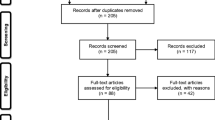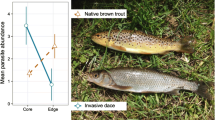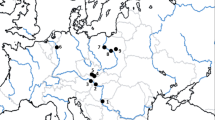Abstract
Introduced species may have a competitive advantage over native species due to a lack of predators or pathogens. In the North Sea region, it has been assumed that no metazoan parasites are to be found in marine introduced species. In an attempt to test this assumption, we found native parasites in the introduced bivalves Crassostrea gigas and Ensis americanus with a prevalence of 35% and 80%, respectively, dominated by the trematode Renicola roscovita. When comparing these introduced species with native bivalves from the same localities, Mytilus edulis and Cerastoderma edule, trematode intensity was always lower in the introduced species. These findings have three major implications: (1) introduced bivalves are not free of detrimental parasites which raises the question whether introduced species have an advantage over native species after invasion, (2) introduced bivalves may divert parasite burdens providing a relief for native species and (3) they may affect parasite populations by influencing the fate of infectious stages, ending either in dead end hosts, not being consumed by potential final hosts or by adding new hosts. Future studies should consider these implications to arrive at a better understanding of the interplay between native parasites and introduced hosts.
Similar content being viewed by others
References
W Armonies and K Reise, On the population development of the introduced razor clam Ensis americanus near the island of Sylt (North Sea). Helgoländer Meeresuntersuchungen 52 (1999) 291-300
BH Buck, DW Thieltges, U Walter, G Nehls and H Rosenthal, Inshore-offshore comparison of parasite infestation in Mytilus edulis: implications for open ocean aquaculture. Journal of Applied Ichthyology 21 (2005) 107-113
JT Carlton, Transoceanic and interoceanic dispersal of coastal marine organisms: the biology of ballast water. Oceanography and Marine Biology Annual Review 23 (1985) 313-371
JT Carlton, Man’s role in changing the face of the ocean:␣biological invasions and implications for conservation of near-shore environments. Conservation Biology 3 (1989) 265-273
RI Colautti, A Ricciardi, IA Grigorovich and HJ MacIsaac, Is invasion success explained by the enemy release hypothesis?. Ecology Letters 7 (2004) 721-733
Conn DB, Babapulle MN and Klein KA (1994) Invading the Invaders: Infestation of Zebra Mussels by Native Parasites in the St. Lawrence River. Madison, Wisconsin, 515–523. Proceedings of the Fourth International Zebra Mussel Conference
R Cosel von, J Dörjes and U Mühlenhardt-Siegel, Die amerikanische Schwertmuschel Ensis directus (Conrad) in der Deutschen Bucht. I. Zoogeographie und Taxonomie im␣Vergleich mit einheimischen Schwertmuschel-Arten. Senckeu-bergiana maritima 14 (1982) 147-172
GW Cox, Alien Species and Evolution. Washington: Island Press (2004).
T Dernedde, Vergleichende Untersuchungen zur Nahrungszusammensetzung von Silbermöwe (Larus argentatus), Sturmmöwe (L. canus) and Lachmöwe (L. ridibundus) im Königshafen/Sylt. Corax 15 (1993) 222-240
C Desclaux, X Montaudouin de and G Bachelet, Cockle emergence at the sediment surface: ‘favourization’ mechanism by digenean parasites?. Diseases of Aquatic Organisms 52 (2002) 137-149
S Diederich, G Nehls, JEE Beusekom van and K Reise, Introduced oysters (Crassostrea gigas) in the northern Wadden Sea: invasion accelerated by warm summers?. Helgoland Marine Research 59 (2005) 97-106
AM Dunn and JTA Dick, Parasitism and epibiosis in native and non-native gammarids in freshwater in Ireland. Ecography 21 (1998) 593-598
WJ Freeland, Parasites and the coexistence of animal host species. American Naturalist 121 (1983) 223-236
Ökosystem Wattenmeer: Austausch-, Transport- und Stoffumwandlungsprozesse. Berlin: Springer (1998).
BL James, Host selection and ecology of marine digenean larvae. In: DJ Crisp (ed.) European Marine Biology Symposia 4. London UK: Cambridge University Press (1971) pp. 179-196
RM Keane and MJ Crawley, Exotic plant invasions and the enemy release hypothesis. Trends in Ecology and Evolution 17 (2002) 164-170
G Lauckner, Diseases of Mollusca: Gastropoda. In: O Kinne (ed.) Diseases of Marine Animals, Volume I. Hamburg: Biologische Anstalt Helgoland (1980) pp. 311-424
G Lauckner, Diseases of Mollusca: Bivalvia. In: O Kinne (ed.) Diseases of Marine Animals, Volume II. Hamburg: Biologische Anstalt Helgoland (1983) pp. 477-962
G Lauckner, Ecological effects of larval trematode infestations on littoral marine invertebrate populations. International Journal for Parasitology 17 (1986) 391-398
E Leppäkoski and S Olenin, Non-native species and rates of spread: lessons from the brackish Baltic Sea. Biological Invasions 2 (2000) 151-163
B Loos-Frank, Experimentelle Untersuchungen über Bau, Entwicklung und Systematik der Himasthlinae (Trematoda, Echinostomatidae) des Nordseeraums. Zeitschrift für Parasitenkunde 28 (1967) 299-351
JL Maron and M Vilà, When do herbivores affect plant invasion? Evidence for the natural enemies and biotic resistance hypothesis. OIKOS 95 (2001) 361-373
X Montaudouin de, I Kisielewski, G Bachelet and C Desclaux, A census of macroparasites in an intertidal bivalve community, Arcachon Bay, France. Oceanologica Acta 23 (2000) 453-468
KN Mouritsen, S McKechnie, E Meenken, JL Toynbee and R Poulin, Spatial heterogeneity in parasite loads in the New Zealand cockle: the importance of host condition and density. Journal of the Marine Biological Association of the UK 83 (2003) 307-310
R Poulin and D Mouillot, Host introductions and the geography of parasitic taxonomic diversity. Journal of Biogeography 30 (2003) 837-845
K Reise, Tidal Flat Ecology. Berlin: Springer (1985).
K Reise, Pacific oysters invade mussel beds in the European Wadden Sea. Senckenbergiana maritima 28 (1998) 167-175
K Reise, S Gollasch and WJ Wolff, Introduced marine species of the North Sea coasts. Helgoländer Meeresuntersuchungen 52 (1999) 219-234
K Reise, N Dankers and K Essink, Introduced species. In: K Essink, C Dettmann, H Farke, K Laursen, G Lüerßen, H Marecic and W Wiersinga (eds.) Wadden Sea Ecosystem 19. Germany: Trilateral Monitoring and Assessment Group, Common Wadden Sea Secretariat, Wilhelmshaven (2005) pp. 155-161
GM Ruiz, JT Carlton, ET Grosholz and AH Hines, Global invasions of marine and estuarine habitats by non-indigenous species: mechanisms, extent and consequences. American Zoologist 37 (1997) 621-632
C Swennen, MF Leopold and M Stock, Notes on growth and behaviour of the American razor clam Ensis directus in the Wadden Sea and the predation on it by birds. Helgoländer Meeresuntersuchungen 39 (1985) 255-261
ME Torchin, KD Lafferty and AM Kuris, Infestation of an introduced host, the European green crab, Carcinus maenas, by a symbiotic nemertean egg predator, Carcinonemertes epialti. Journal of Parasitology 82 (1996) 449-453
ME Torchin, KD Lafferty and AM Kuris, Parasites and marine invasions. Parasitology 124 (2002) 137-151
AM Wegeberg and KT Jensen, In situ growth of juvenile cockles, Cerastoderma edule, experimentally infected with larval trematodes (Himasthla interrupta). Journal of Sea Research 50 (2003) 37-43
B Werding, Morphologie, Entwicklung und Ökologie digener Trematoden-Larven der Strandschnecke Littorina littorea. Marine Biology 3 (1969) 306-333
MJ Wonham and JT Carlton, Trends in marine biological invasions at local and regional scales: the Northeast Pacific ocean as a model system. Biological Invasions 7 (2005) 369-392
Author information
Authors and Affiliations
Corresponding author
Rights and permissions
About this article
Cite this article
Krakau, M., Thieltges, D.W. & Reise, K. Native Parasites Adopt Introduced Bivalves of the North Sea. Biol Invasions 8, 919–925 (2006). https://doi.org/10.1007/s10530-005-4734-8
Received:
Accepted:
Published:
Issue Date:
DOI: https://doi.org/10.1007/s10530-005-4734-8




